Auto Service on Demand
image courtesy of Upsplash : credit Tim Mossholder
Summary
A friend brought an idea to my attention :
"What if you didn't have to wait around to have your car serviced at a dealership?"
Drawing upon my own experiences of a daily 90+ mile commute, I remembered how anxious I felt while rushing to the dealership for maintenance during the lunch hour. This idea resonated with me, and upon further conversations, I was intrigued and excited to help bring this idea to life, in the form of a service.
From our conversations, we formulated an initial goal for this service, which is to help users manage their car's maintenance. This can include everything from recommended dealer service intervals, to charging an electric car, and emergency repairs.
Here's how it'd work:
- User request service from the app
- Car can be picked up, and quickly evaluated by an associate
- Car is taken to a service station, have the appropriate service applied. Notifications to the user informs the user of the service maintenance status
- Car is dropped back off
Role/Tools
I worked as a UX team of one, with self-directed work to developed the artifacts listed below across research , ideation, sketching/wireframes , prototyping phases. I used pen/paper for sketches, Sketch to create the customer journey map, and Axure for the wireframes and interactive prototype.
Who are we designing for?
I collaborated with the founder , and we developed a persona based on our personal observations and experiences. I found this to be a unique position - I was designing something , with myself in mind as the "ideal" user! I had endured a long commute before, and was in the position of having frequent oil changes, in my 90+ mile commute, traveling an hour and a half each way. Further, sitting in a dealership during my lunch break (or worse - on a Saturday!) was not fun, at all. We were moving quickly to get our ideas out the door, and resorted to our own ideation based on our collective experiences. We developed the persona below, to encapsulate this.
Our initial work was created at a break-neck pace. We were working off of personal experience, and assumptions as to what our users wanted. I suggested that we validate our assumptions, before moving any further. I created a Google Forms survey, with the goal of gauging consumer interest, and identify any potential roadblocks. The survey had six respondents.
Conclusions
- The results indicate that users do have issues with their auto service providers, but the key pain points (service wait-times) may not be as strong as predicted.
- Service wait time had a surprisingly lukewarm response, with only two people measuring a dislike, and the remainder being ambivalent, or positive.
- Also, the app/service as initially conceived, would not be used as often, with average usage being no higher than a few times a year.
- People have a consistently negative reaction towards customer service, and perhaps an opportunity to remove the user from that experience, with the proposed service acting as liaison, could serve as a primary value proposition for the service.
- Distance does appear to be an issue, with 50% of the respondents measuring a strong response. Implied in this response, is the time that it takes to drive the distance as well; the service could alleviate this pain point, since the service agents would be transporting the cars, and giving back the time to users.
- Service cost is a not a huge pain point, which is good - I’d like to suggest that a service fee for convenience may have room to coexist with maintenance costs users incur upon their visits.
The next iteration - build trust and increase user engagement
Incorporating features that promote trust is critical for the success of the service. Initial measures indicate a weak level of trust, with only two respondents with positive results.
User notifications had the most consistent, positive response, and that is a feature recommended to be added as a top priority. GPS tracking is another feature that had an overall strong impact, and would be added as well.
An extended user profile, and pictures of the vehicle would be optional features recommended to be added in a future iteration.
Users indicated that don’t visit auto service places as often. Add a dashboard to the app to help users understand driving behavior (gas mileage, average speed, overall efficiency), and perhaps add a gamification element to encourage safe and efficient driving. This suggestion serves to increase user engagement, to get the users to use the app more, and provide information that may be useful and valuable in the short term, and “be there” when the user is ready for auto service.
Lessons Learned
Biggest finding - our anecdotal persona is not representative of what our typical user may be. We were just one of the several different types of users, and our personal pain points where not as acute as the survey respondents. This served as a reminder to get out into the world to validate our hypothesis, to ensure we are truly capturing the needs of potential users.








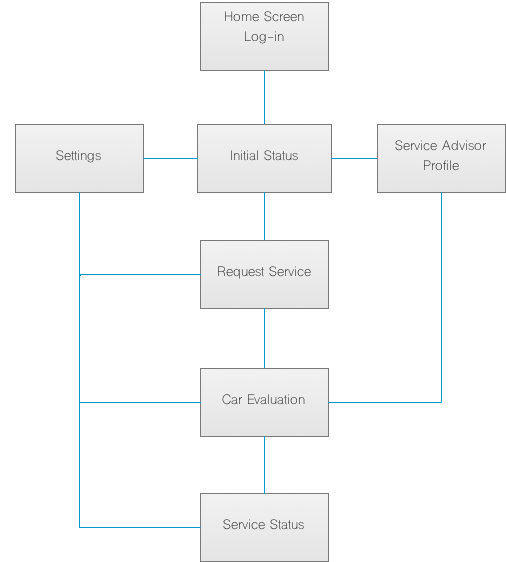
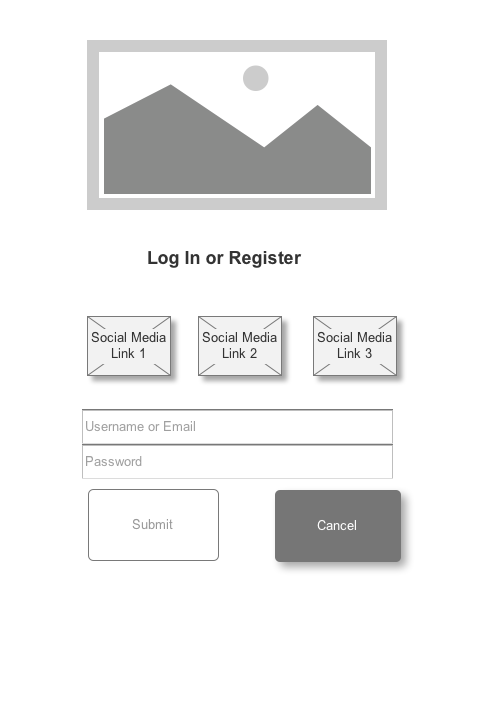
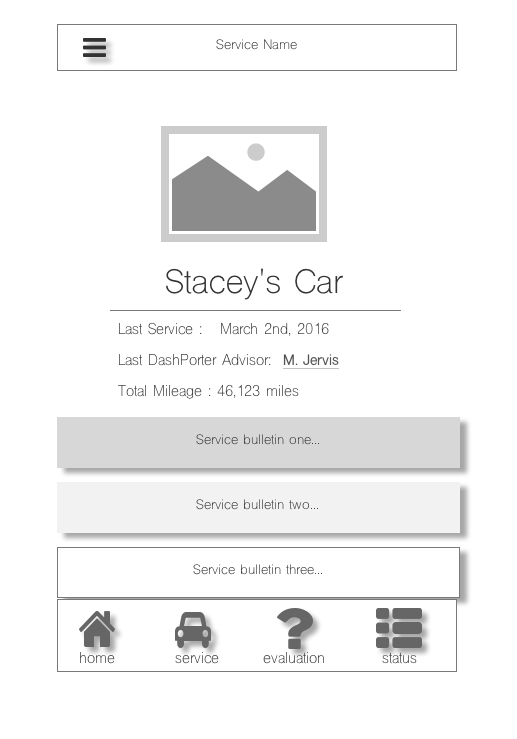
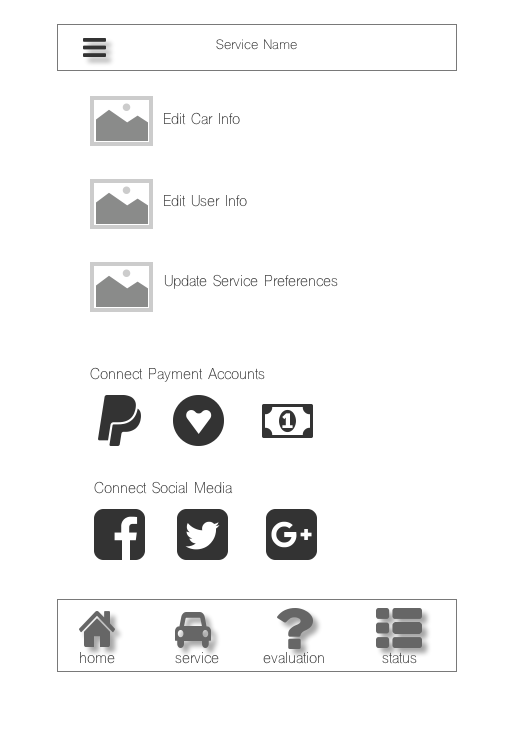
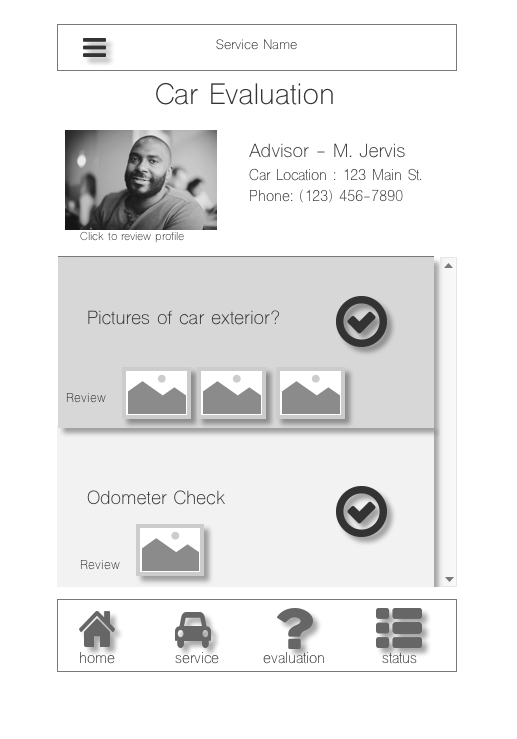
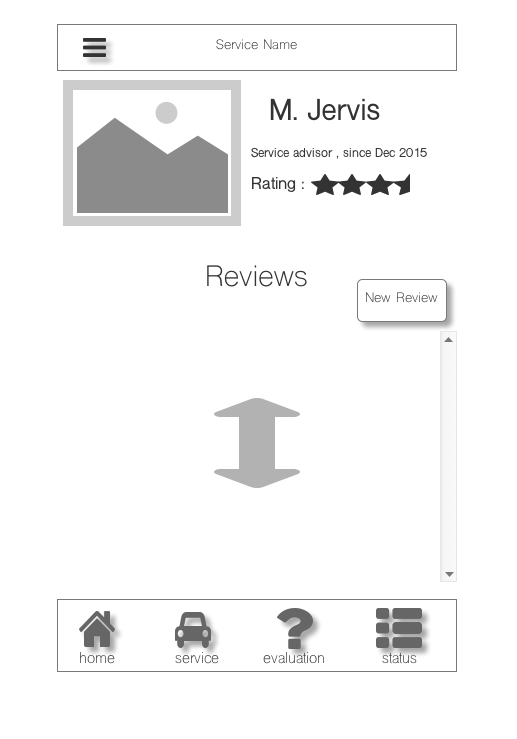
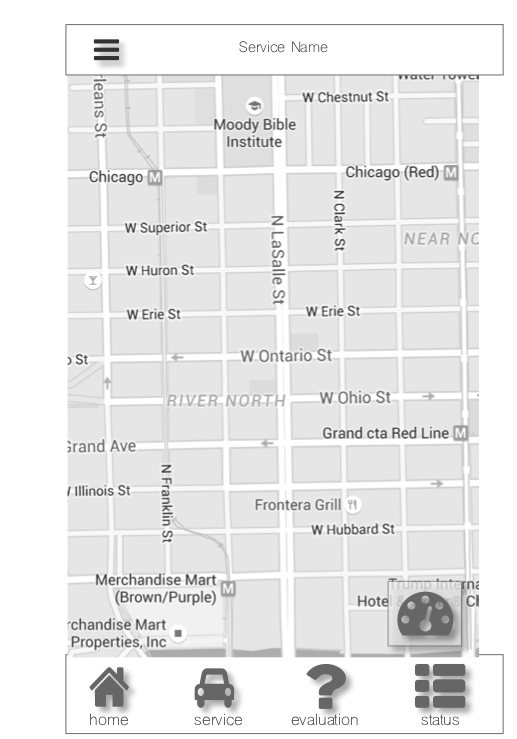
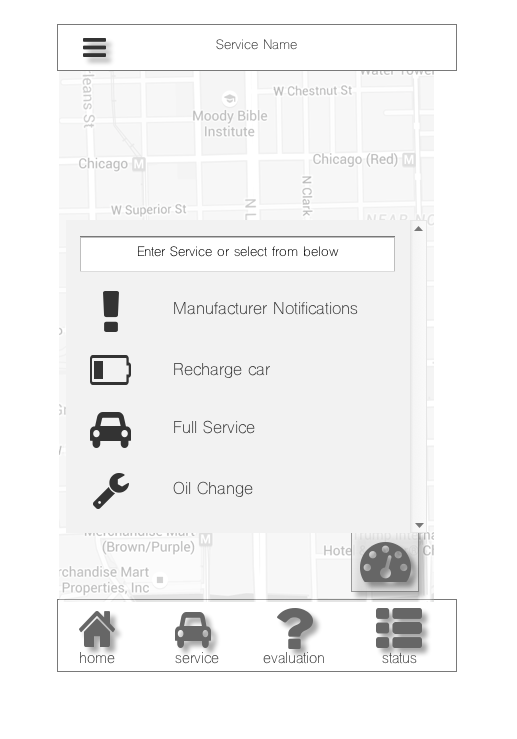
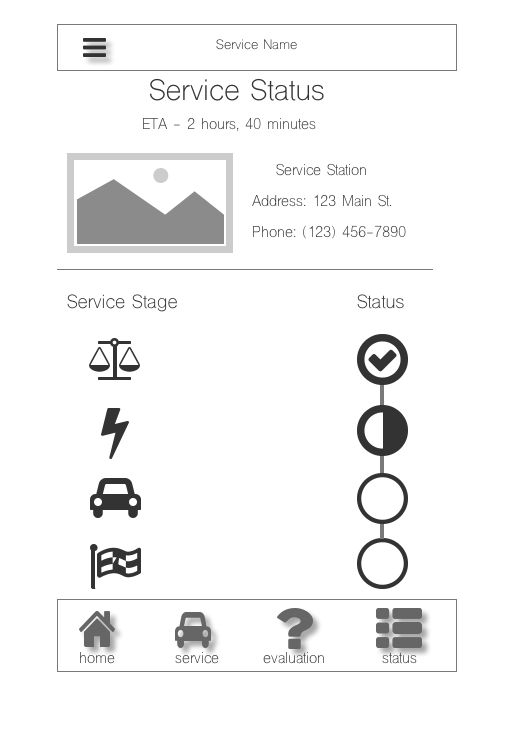













Updates to the home screen include a scrollable dashboard with information on a user's driving pattern and information about his/her car.